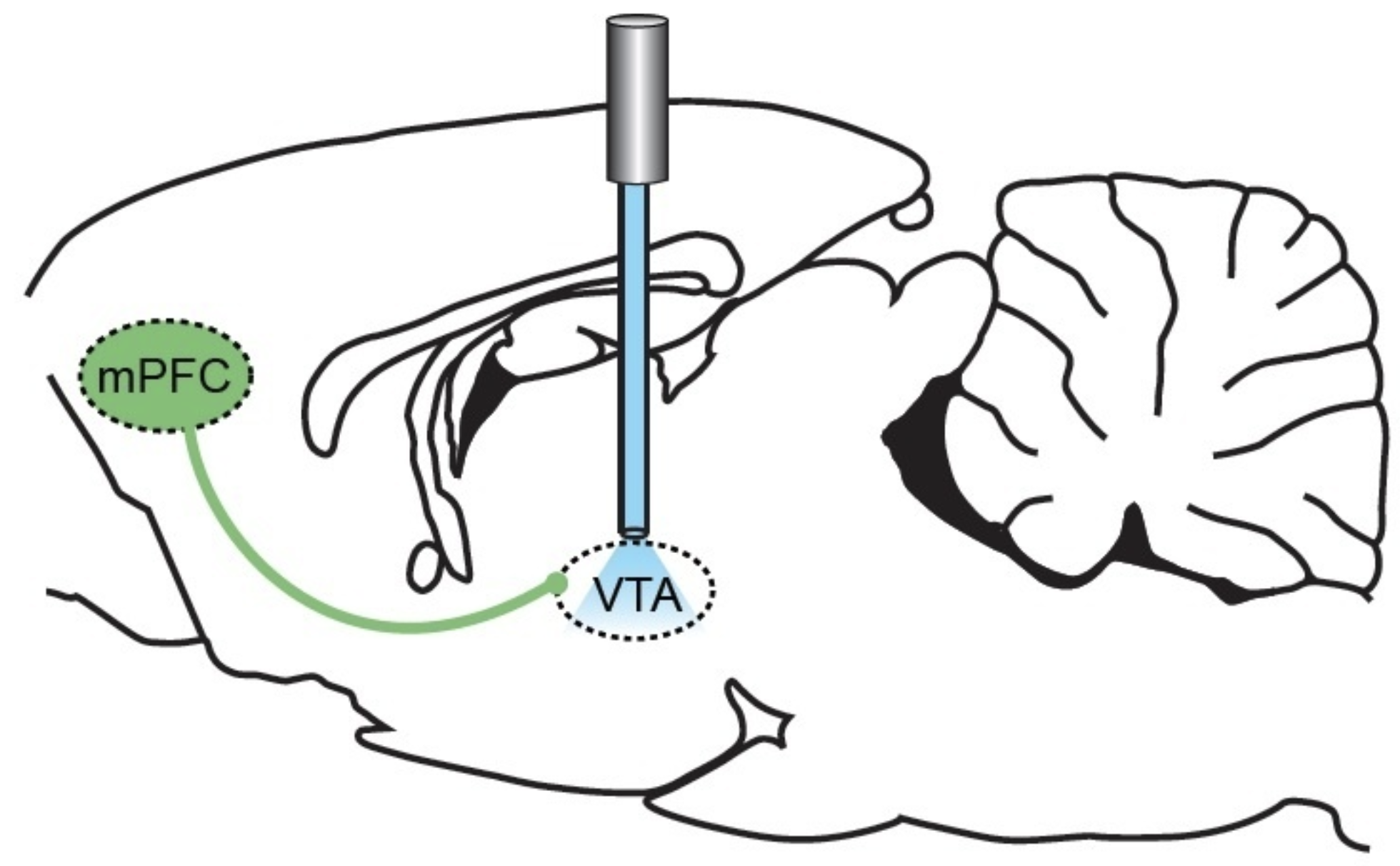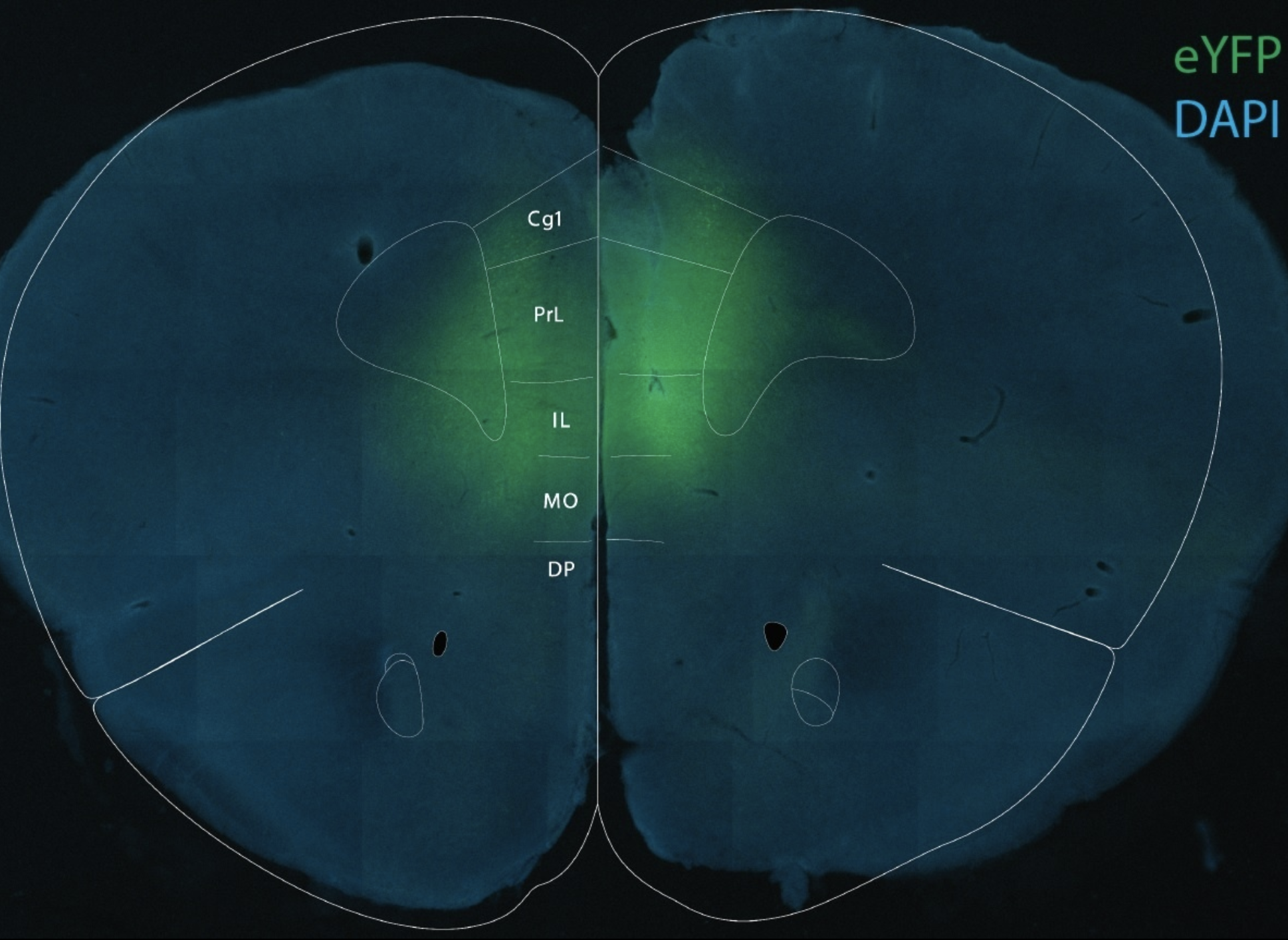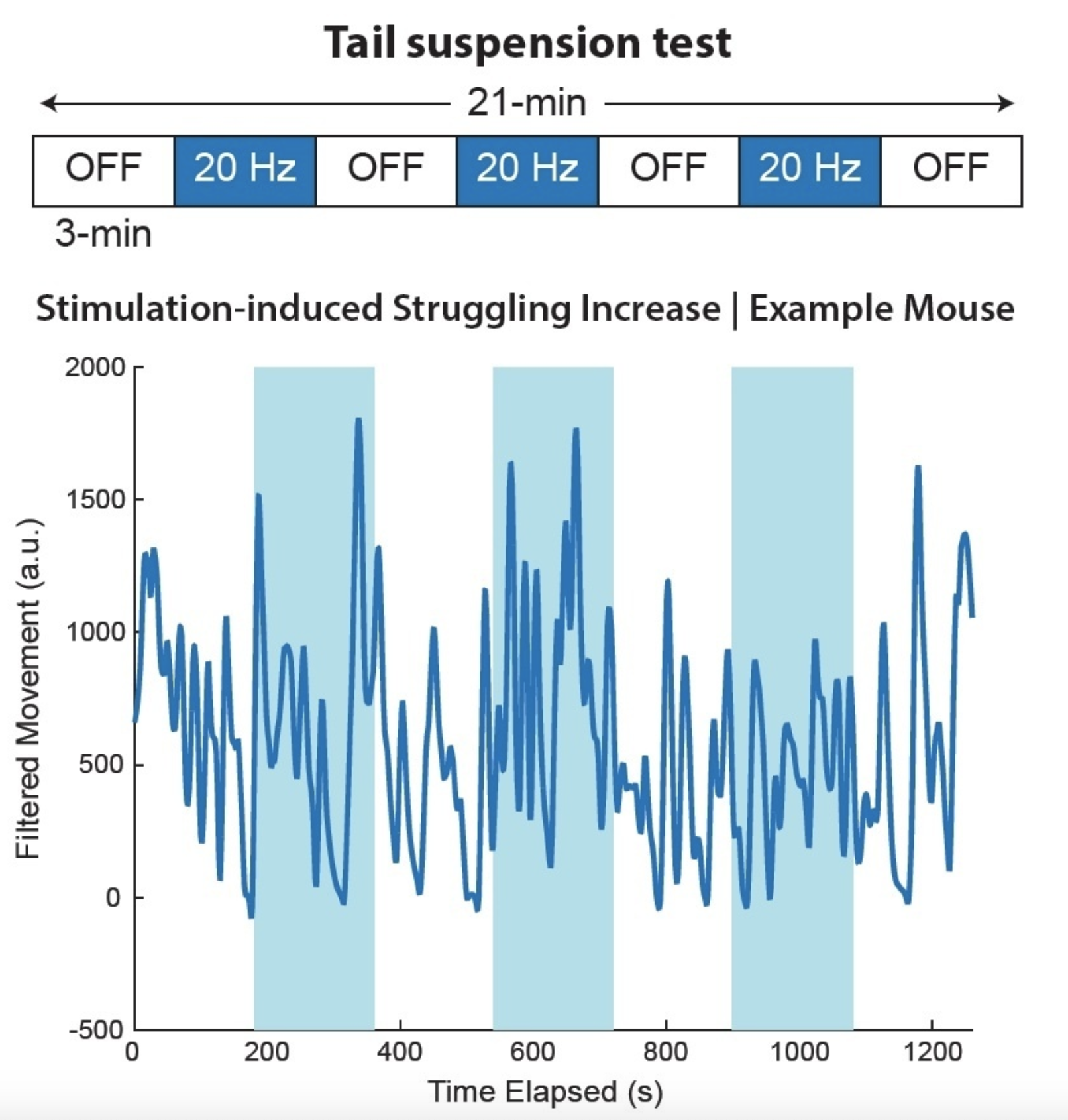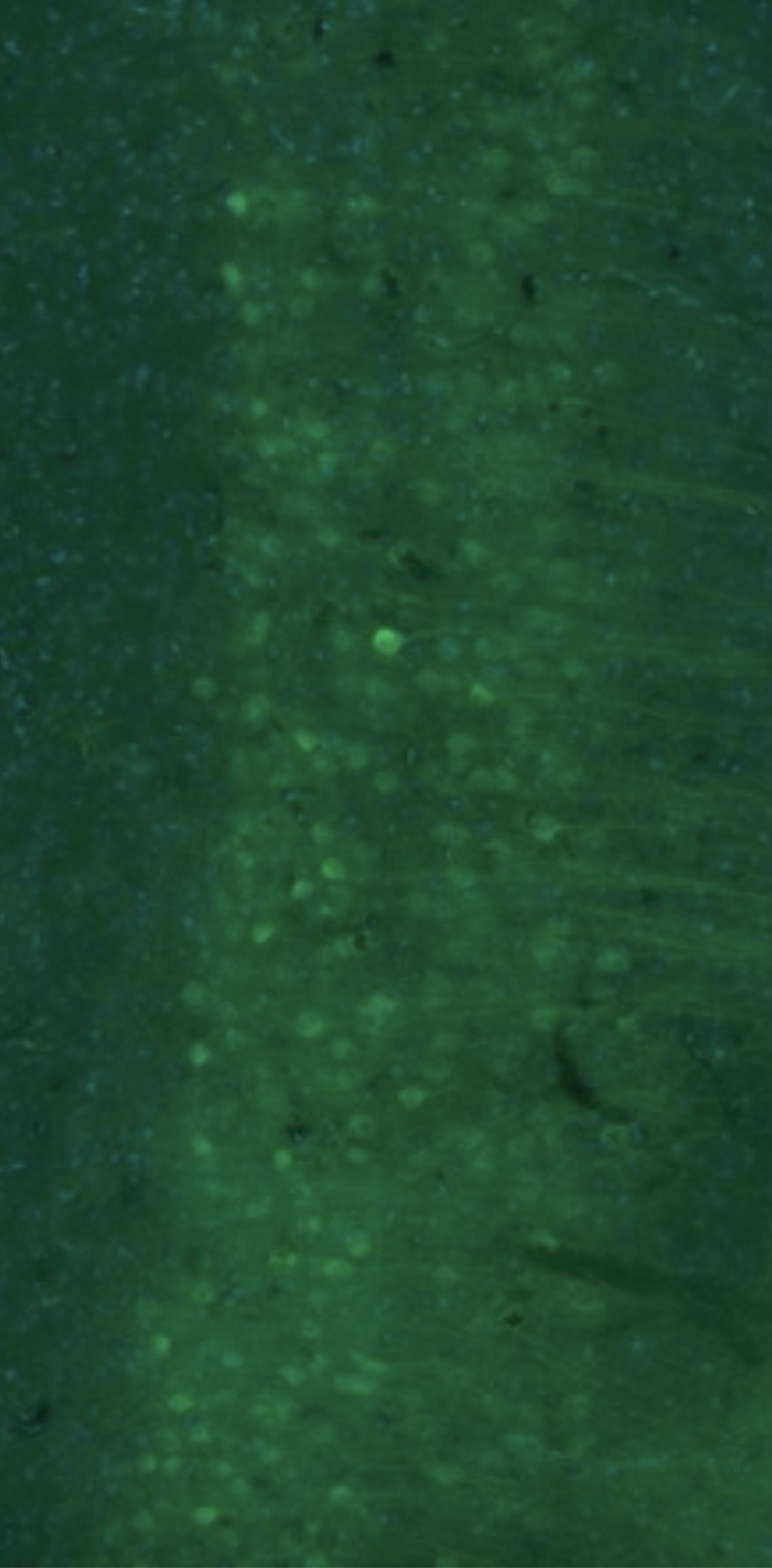Overview
I use a variety of optical techniques including to investigate the neural circuits that underlie motivated behavior in rodents. Undergraduate mentorship has been an important component of my research throughout graduate school, and I'm proud of the work my students have done and the places they have gone.Prefrontal Projections to the Midbrain
How does an organism incorporate sensory cues from its environment and internal state (e.g., levels of stress or hunger) to coordinate purposeful, goal-oriented actions? My research investigates how projections from the medial prefrontal cortex (mPFC; a region important for planning complex behavior) to the ventral tegmental area (VTA; the brain's hub of dopamine neurons and important for motivation) influences how an organisms explores new environments and escapes from aversive environments.
I've approached this question from three directions, each utilizing a distinct methodology:
- Optogenetic manipulation: What impact does optogenetic stimulation of the mPFC-VTA have on locomotion, reward, and escape behavior?
- Photometry: How does the mPFC-VTA population encode movement in neutral, rewarding, and aversive contexts?
- Rabies-assisted anatomical tracing: How are VTA-projecting mPFC interconnected with the rest of the brain, and what can this tell us about behavior?


Optogenetic Interrogation of mPFC-VTA
My research has shown that optogenetic stimulation of mPFC-VTA elicits escape-like behavior in aversive context and increases exploration in neutral context, but has no effect on reward-seeking behavior. This work highlights a selective role for the mPFC-VTA projection in effortful behaviors relevant to depression.
Undergraduate Assistance
Outstanding work from multiple undergraduates, particularly Vladlena Lee and Nick Ringelberg, was instrumental for this project.



Neural Recording of mPFC-VTA in Behaving Mice
I use fiber photometry to record the calcium activity of the mPFC-VTA population in behaving mice. My work has shown that this population encodes movement in neutral and aversive contexts, but does not encode reward, paralleling my optogenetic stimulation experiments.
Undergraduate Assistance
Ongoing work from undergraduate Brittney Moncrieffe has been particularly helpful in this project.


Anatomical Tracing of the mPFC-VTA Projection
I am using rabies-assisted tracing to map whole-brain inputs to VTA-projecting mPFC cells. This project will give us a better sense of the information these cells receive, and may shed further light on their behavioral relevance.
Undergraduate Assistance
This project was initiated by Kyle Pellegrino, an undergraduate who graduated in 2018.
